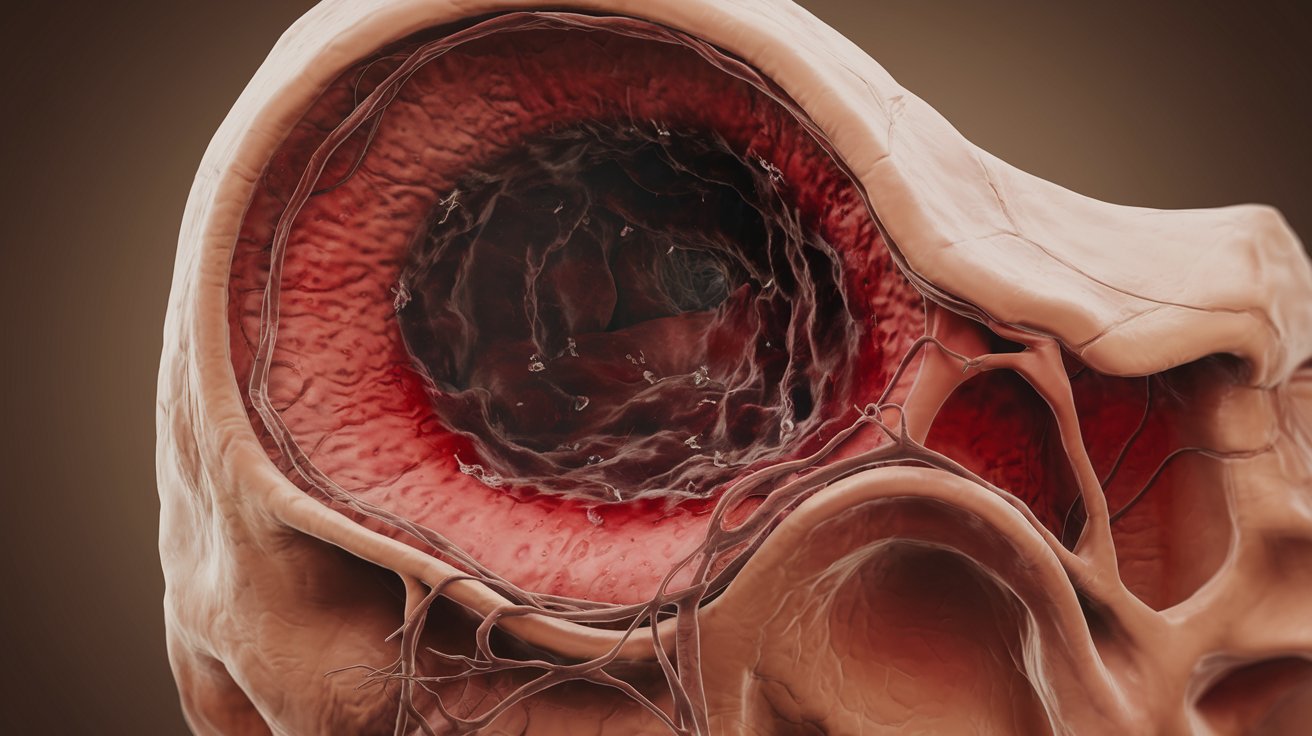
What exactly is a cerebral aneurysm? It's a bulging, weakened area in the wall of an artery in the brain. This condition can be life-threatening if it ruptures, leading to severe complications like hemorrhagic stroke. Cerebral aneurysms affect millions, with women and certain ethnic groups at higher risk. Often, these aneurysms go unnoticed until they cause symptoms or rupture. Early detection and treatment are crucial for preventing catastrophic outcomes. Understanding the risk factors, symptoms, and treatment options can make a significant difference in managing this condition effectively. Let's dive into 40 essential facts about cerebral aneurysms to better understand this serious health issue.
Key Takeaways:
- Cerebral aneurysms are bulging areas in the brain's arteries, with risk factors including age, gender, and lifestyle. Early detection and preventive measures are crucial for reducing the risk of rupture.
- Ruptured brain aneurysms can lead to life-threatening hemorrhages, with symptoms like severe headaches and neurological deficits. Treatment options include surgery to prevent further bleeding.
Understanding Cerebral Aneurysms
Cerebral aneurysms, also known as brain aneurysms, are a serious medical condition that can have life-threatening consequences. Let's dive into some key facts to better understand this condition.
- Definition: A cerebral aneurysm is a bulging, weakened area in the wall of an artery in the brain.
- Prevalence: Approximately 6.8 million people in the United States have an unruptured brain aneurysm, which translates to about 1 in 50 people.
- Risk Factors: The exact cause of cerebral aneurysm formation is not always known, but there are several risk factors, including advanced age, hypertension, smoking, alcohol abuse, and atherosclerosis.
- Age Group: Most people who have brain aneurysms are between the ages of 35 and 60, but they can occur in children as well. Most aneurysms develop after the age of 40.
- Gender: Women are more likely than men to have a brain aneurysm, with a 3:2 ratio favoring women.
Symptoms and Detection
Recognizing the symptoms and understanding how cerebral aneurysms are detected can be crucial for early intervention.
- Rupture Risk: Women, particularly those over the age of 55, have a higher risk of brain aneurysm rupture than men, about 1.5 times the risk.
- Ethnicity: African-Americans and Hispanics are about twice as likely to have a brain aneurysm rupture compared to Caucasians.
- Symptoms: Most cerebral aneurysms are small and do not cause symptoms. However, when they grow, they can press against nerves and cause symptoms such as pain above and behind the eye, numbness, weakness, paralysis on one side of the face, a dilated pupil, vision changes, or double vision.
- Detection: Most cerebral aneurysms are discovered incidentally during imaging tests done for other reasons, such as headaches, trauma, or concerns about a stroke.
Types of Cerebral Aneurysms
There are different types of cerebral aneurysms, each with unique characteristics and implications.
- Types of Aneurysms: There are different types of cerebral aneurysms, including saccular (berry), dissecting, mycotic (infectious), and pseudoaneurysm (dilatation of an artery following injury).
- Saccular Aneurysms: Saccular aneurysms are the most common type and develop along weak spots in the wall of an artery.
- Dissecting Aneurysms: Dissecting aneurysms form from tears to the innermost layers of a blood vessel and often follow traumatic injury or plaque formation.
- Mycotic Aneurysms: Mycotic aneurysms are caused by a bacterial infection in the wall of an artery.
- Pseudoaneurysms: Pseudoaneurysms are dilatations of an artery that form when the artery is injured by abrupt, severe trauma.
Consequences of Rupture
The rupture of a cerebral aneurysm can lead to severe and often fatal outcomes.
- Rupture Consequences: When an aneurysm ruptures, it bleeds into the space around the brain, leading to a subarachnoid hemorrhage (SAH). This event is life-threatening and can cause a hemorrhagic stroke.
- Rupture Symptoms: Symptoms of a ruptured aneurysm include a rapid onset of the "worst headache of my life," stiff neck, nausea and vomiting, changes in mental status such as drowsiness, pain in specific areas like the eyes, dilated pupils, loss of consciousness, high blood pressure, loss of balance or coordination, sensitivity to light, back or leg pain, and problems with certain functions of the eyes, nose, tongue, and/or ears controlled by one or more of the 12 cranial nerves.
- Rupture Mortality: Ruptured brain aneurysms are fatal in about 50% of cases. Of those who survive, about 66% suffer some permanent neurological deficit.
- Survival Rate: Approximately 15% of people with a ruptured aneurysm die before reaching the hospital. Most deaths are due to rapid and massive brain injury from the initial bleeding.
- Economic Impact: According to a 2004 study, the combined lost wages of survivors of brain aneurysm rupture and their caretaker for one year were $150 million.
Size and Frequency
The size and frequency of aneurysms can vary, impacting the risk and treatment options.
- Size of Aneurysms: Most aneurysms are small, about 1/8 inch to nearly one inch in diameter. Aneurysms larger than one inch are referred to as "giant" aneurysms and pose a particularly high risk.
- Multiple Aneurysms: Twenty percent of people diagnosed with a brain aneurysm have more than one aneurysm.
- Giant Aneurysms: Giant aneurysms can be difficult to treat and pose a high risk due to their size.
- Rupture Frequency: Ruptured brain aneurysms account for 3-5% of all new strokes.
- Emergency Department Evaluation: Among patients evaluated in an emergency department for headaches, approximately one in 100 has a ruptured aneurysm, according to one study. Another study puts the number at four in 100.
Importance of Early Diagnosis
Early diagnosis can be life-saving and prevent severe outcomes.
- Early Diagnosis Importance: Accurate early diagnosis of a ruptured brain aneurysm is critical, as the initial hemorrhage may be fatal or result in devastating neurologic outcomes.
- Misdiagnosis Rates: Despite the widespread availability of brain imaging that can detect a ruptured brain aneurysm, misdiagnosis or delays in diagnosis occur in up to one quarter of patients when initially seeking medical attention. In three out of four cases, misdiagnosis results from a failure to do a scan.
- Treatment Costs: The treatment of ruptured brain aneurysms is far more costly than the treatment of unruptured aneurysms.
Genetic Factors and Family History
Genetics and family history play a significant role in the risk of developing cerebral aneurysms.
- Genetic Factors: There is a strong genetic element associated with cerebral aneurysms, with certain genetic conditions increasing the prevalence. These include autosomal dominant polycystic kidney disease, Ehlers-Danlos syndrome, fibromuscular dysplasia, tuberous sclerosis, arteriovenous malformations (AVM), and coarctation of the aorta.
- Family History: If there is a family history of aneurysm, meaning that parents or siblings have been diagnosed with a brain aneurysm or experienced a ruptured brain aneurysm, screening using medical imaging is recommended.
- Screening Recommendations: Early detection through screening is crucial for preventing rupture. Individuals with a family history should undergo regular medical imaging tests.
Preventive Measures
Taking preventive measures can help reduce the risk of aneurysm formation and rupture.
- Risk Factors Control: While controlling risk factors such as cigarette smoking, high blood pressure, high cholesterol, poor diet, lack of exercise, and stimulant drug use can decrease the risk of occurrence, these measures do not prevent rupture.
- Preventive Measures: The best way to prevent a bleed is through early detection. However, preventive measures include avoiding smoking, controlling blood pressure, and maintaining a healthy lifestyle.
- Stress Impact: Stress probably does not cause brain aneurysm formation but can lead to a bleed. There are case reports of aneurysms that ruptured during sexual intercourse or episodes of high blood pressure.
- Exercise Impact: Strenuous exercise generally raises heart rate and circulation rather than blood pressure. However, some exercises that involve a lot of straining, like weightlifting, can potentially stress aneurysms.
Anatomy and Hemodynamic Stress
The unique anatomy of an individual and the stress on arterial walls can influence aneurysm formation.
- Anatomy Role: The unique anatomy of an individual, including the way arteries bend and turn, can come into play in aneurysm formation. Excessive curves in the arteries can cause hemodynamic stress on the arterial wall, leading to weakening and bulging.
- Hemodynamic Stress: Hemodynamic stress refers to the pressure exerted by blood flow on the arterial wall. This stress can degrade tissue and cause it to weaken, bulge, and bleed.
- Arterial Weakness: The majority of cerebral aneurysms occur along a ring of interconnected arteries at the base of the brain known as the circle of Willis. These arteries are subject to hemodynamic stress, which can lead to weakening and aneurysm formation.
Treatment Options
Cerebral aneurysms can be treated with surgical interventions to prevent rupture and preserve neurological function.
- Subarachnoid Hemorrhage: Subarachnoid hemorrhage (SAH) usually occurs with rupture and is associated with a high rate of morbidity and mortality. SAH is a life-threatening event that requires immediate medical attention.
- Treatment Options: Cerebral aneurysms can be cured with surgery. The treatment options include clipping the aneurysm with a clip or coiling the aneurysm with a coil. These procedures aim to prevent further bleeding and preserve neurological function.
- Interprofessional Team Role: The interprofessional team plays a crucial role in caring for patients with cerebral aneurysms. This team includes neurosurgeons, neurologists, radiologists, and other healthcare professionals who work together to diagnose, treat, and manage the condition.
Key Takeaways on Cerebral Aneurysms
Cerebral aneurysms are serious and can be life-threatening. They often go unnoticed until they rupture, leading to severe complications. Risk factors include age, gender, ethnicity, and lifestyle choices like smoking and alcohol use. Symptoms might be subtle or absent until the aneurysm grows or bursts. Early detection through regular screening, especially for those with a family history, is crucial. Treatment options like clipping or coiling can prevent ruptures and save lives. Controlling blood pressure, avoiding smoking, and maintaining a healthy lifestyle can reduce risks. Understanding these facts helps in recognizing the importance of early diagnosis and intervention. Stay informed, take preventive measures, and consult healthcare professionals if you suspect any symptoms. Your health could depend on it.
Frequently Asked Questions
Was this page helpful?
Our commitment to delivering trustworthy and engaging content is at the heart of what we do. Each fact on our site is contributed by real users like you, bringing a wealth of diverse insights and information. To ensure the highest standards of accuracy and reliability, our dedicated editors meticulously review each submission. This process guarantees that the facts we share are not only fascinating but also credible. Trust in our commitment to quality and authenticity as you explore and learn with us.


